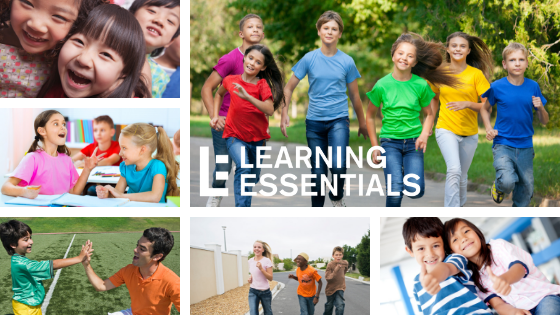Creating a Positive Climate for Learning, Part I
Whether we’re talking public schools, private schools, tutoring sessions, or homework at the kitchen table, a positive mindset goes a long way when it comes to the learning environment. Research shows that when teachers and students feel valued, respected, motivated, and engaged, learning increases exponentially—of course it does! As logical as this push for positivity may seem, it does not simply emerge out of nowhere; it must be cultivated by those who wish to bring it to life. There are small, deliberate steps that schools, parents, teachers, and students can take to foster a positive, successful learning environment.
At the school level
Creating a safe, engaging, positive learning space is likely the goal of every school. In order to do this, schools must ensure that the individual mission and vision for the school is clearly defined and communicated. Simply put, the vision encompasses the goals for the school and its “ideal” future; the mission involves the day-to-day steps for how the school plans to make that vision a reality. Instead of passively including the vision on official letterhead or posting it to the school’s web pages, school administrators should make a concerted effort to vocalize the goals for their school.
- The vision should be visible in classrooms, conference rooms, and common areas, like the library or cafeteria.
- The vision should be phrased in a student-friendly manner, and in a way in which student needs are clearly put at the forefront.
- Schools should communicate how this vision will come to life and set up expectations for students and staff that foster such an environment.
- Recognize students who embody the vision or mission statements with awards, celebrations, certificates, etc. The point is to grow an appreciation for the overall goals of the school and highlight when small gains are made by its members.
- The vision should account for the community as a whole. Perhaps a middle or high school will partner with the neighborhood elementary school for a “buddy-study” program; or maybe the local businesses or organizations want to offer a career day or “shadowing” opportunity. A nearby retirement community may want to perform with the school’s chorus for an intergenerational choir.
- On a similar note, schools can foster positivity by giving back to the community. A food drive, coat collection, trash clean-up, or anonymous pay-it-forward initiative in the community can build positivity and teach students what it means to contribute to society. Even small gestures, like thank you cards or planting a tree on campus for Earth Day can spur more positive motivation for learning.
- Appreciation days for support staff, maintenance personnel, security, and cafeteria workers also help to exhibit a learning environment where everyone is valued. Students benefit from learning in a building where everyone’s efforts and contributions are acknowledged and celebrated. Showing admiration and appreciation to the hardworking people that run the building every day helps improve the school climate on both singular and wholistic levels.
On the topic of recognition, schools can foster positivity and an optimistic climate by celebrating student work and achievements throughout the building. Schools should think about using the daily news show or morning announcements to announce birthdays, students of the month, athletic scores and stats, community service achievements, etc. Ask students to exhibit their art work, photography, essays, or poems in display cases throughout the building—this shows young learners that, more than the grade, it’s the effort and growth that builds the foundation of a strong, successful school.






